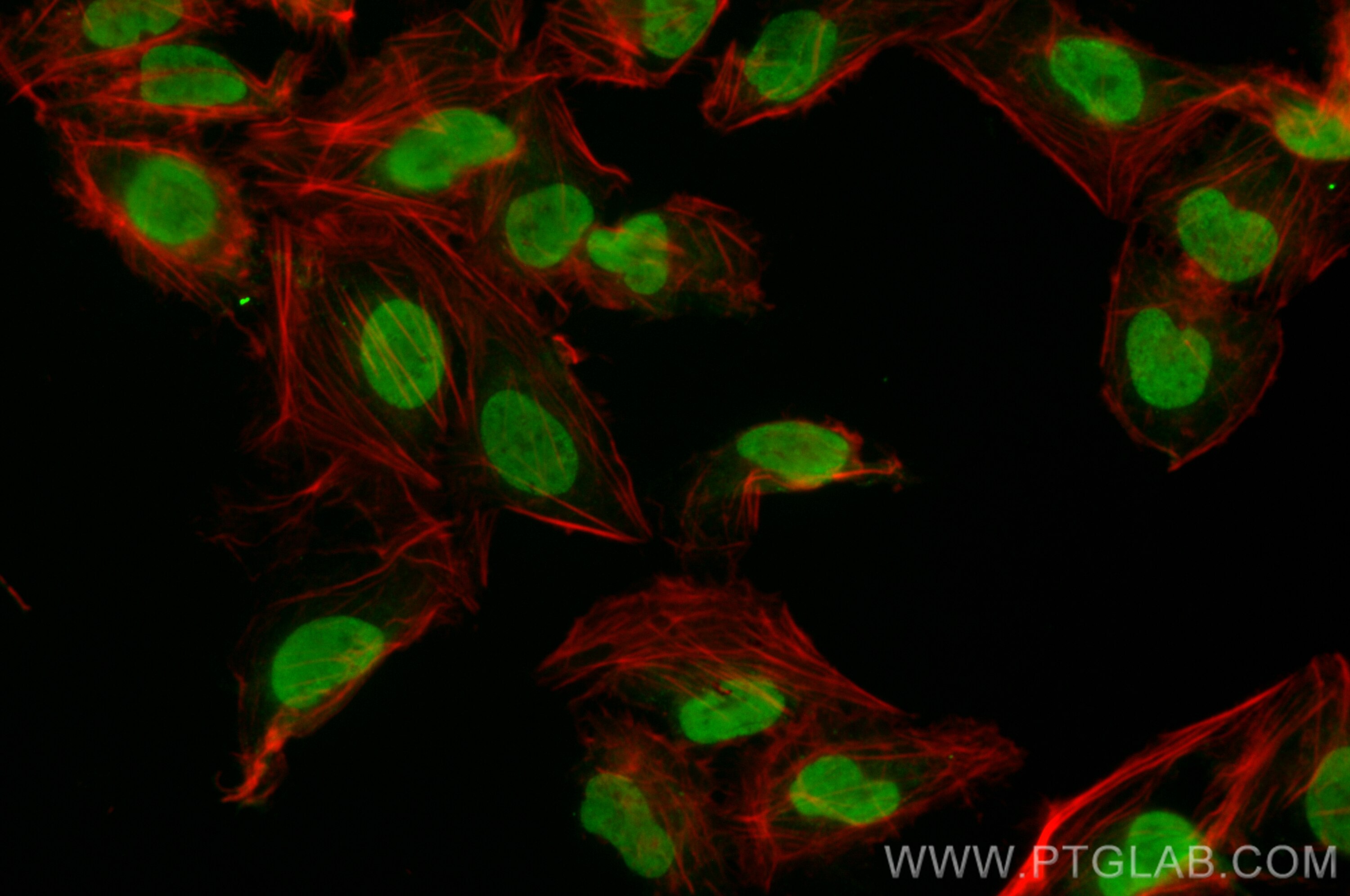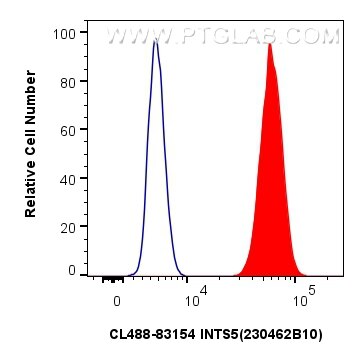Tested Applications
| Positive IF/ICC detected in | U2OS cells |
| Positive FC (Intra) detected in | HeLa cells |
Recommended dilution
| Application | Dilution |
|---|---|
| Immunofluorescence (IF)/ICC | IF/ICC : 1:50-1:500 |
| Flow Cytometry (FC) (INTRA) | FC (INTRA) : 0.80 ug per 10^6 cells in a 100 µl suspension |
| It is recommended that this reagent should be titrated in each testing system to obtain optimal results. | |
| Sample-dependent, Check data in validation data gallery. | |
Product Information
CL488-83154 targets INTS5 in IF/ICC, FC (Intra) applications and shows reactivity with human, mouse samples.
| Tested Reactivity | human, mouse |
| Host / Isotype | Rabbit / IgG |
| Class | Recombinant |
| Type | Antibody |
| Immunogen | INTS5 fusion protein Ag5129 Predict reactive species |
| Full Name | integrator complex subunit 5 |
| Calculated Molecular Weight | 108 kDa |
| Observed Molecular Weight | 108 kDa |
| GenBank Accession Number | BC060841 |
| Gene Symbol | INTS5 |
| Gene ID (NCBI) | 80789 |
| RRID | AB_3673204 |
| Conjugate | CoraLite® Plus 488 Fluorescent Dye |
| Excitation/Emission Maxima Wavelengths | 493 nm / 522 nm |
| Form | Liquid |
| Purification Method | Protein A purification |
| UNIPROT ID | Q6P9B9 |
| Storage Buffer | PBS with 50% Glycerol, 0.05% Proclin300, 0.5% BSA, pH 7.3. |
| Storage Conditions | Store at -20°C. Avoid exposure to light. Stable for one year after shipment. Aliquoting is unnecessary for -20oC storage. |
Background Information
INTS5, also named as INT5 and KIAA1698, is a component of the Integrator complex which involved in the small nuclear RNAs (snRNA) U1 and U2 transcription and in their 3'-box-dependent processing. The Integrator complex is associated with the C-terminal domain (CTD) of RNA polymerase II largest subunit (POLR2A) and is recruited to the U1 and U2 snRNAs genes.
Protocols
| Product Specific Protocols | |
|---|---|
| IF protocol for CL Plus 488 INTS5 antibody CL488-83154 | Download protocol |
| Standard Protocols | |
|---|---|
| Click here to view our Standard Protocols |





